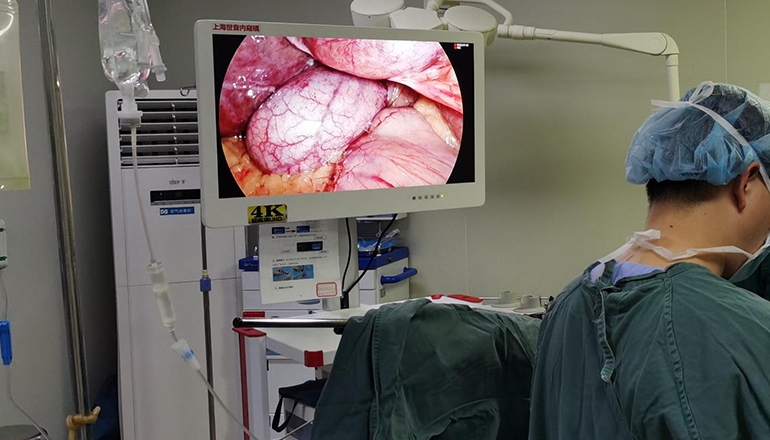- Shanghai, China
- [email protected]
- +86-21-58189111
Laparoscopic fenestration is a minimally invasive surgical technique used to treat giant hepatic cysts. These cysts can grow to a large size and cause symptoms such as abdominal pain, bloating, and difficulty breathing. Laparoscopic fenestration involves creating a small opening in the cyst to drain the fluid and reduce its size.
During the procedure, the patient is placed under general anesthesia, and a laparoscope is inserted through a small incision in the abdomen. The laparoscope is a thin, flexible tube with a camera and light at the end, allowing the surgeon to see inside the abdomen. Additional small incisions are made to insert instruments to manipulate the cyst and perform the fenestration.
The surgeon first examines the cyst using the laparoscope and determines the best location for the fenestration. They then use a needle to puncture the cyst and aspirate the fluid, which can be several liters in volume. Once the cyst has been deflated, the surgeon uses an instrument to create a small opening in the cyst wall. The opening is then enlarged using scissors or a laser, and the cyst wall is sutured to the abdominal wall to prevent the cyst from reforming.
After the procedure, the patient is monitored for a brief period in the recovery room and then discharged home. The small incisions are closed with sutures or surgical glue, and the patient is instructed to avoid heavy lifting and strenuous activity for several weeks.

Laparoscopic fenestration of giant hepatic cysts offers several advantages over traditional open surgery. The laparoscopic approach results in smaller incisions, less pain and scarring, and a shorter recovery time. Additionally, it allows for a more precise and controlled fenestration of the cyst, reducing the risk of complications such as bleeding or infection.
However, not all patients are candidates for laparoscopic fenestration. Patients with severe medical conditions or those with complex cysts may require open surgery. It is important for patients to discuss their treatment options with their healthcare provider to determine the best course of action.
In conclusion, laparoscopic fenestration is a safe and effective treatment option for giant hepatic cysts. The procedure offers several advantages over traditional open surgery and can provide relief from symptoms such as abdominal pain and bloating. With proper patient selection and surgical technique, laparoscopic fenestration can lead to excellent outcomes and a speedy recovery.
It is important for patients to follow postoperative instructions, including proper wound care and activity restrictions, to ensure a smooth recovery. They should also attend follow-up appointments to monitor their progress and address any concerns.
In rare cases, complications may occur after laparoscopic fenestration of giant hepatic cysts. These may include bleeding, infection, or injury to surrounding structures such as the bile duct or blood vessels. It is important for patients to be aware of the signs and symptoms of these complications and seek medical attention if necessary.
In summary, laparoscopic fenestration is a minimally invasive surgical technique that can provide relief from symptoms associated with giant hepatic cysts. The procedure offers several advantages over traditional open surgery and can result in a quicker recovery time with less pain and scarring. Proper patient selection and surgical technique are key to ensuring successful outcomes, and patients should be aware of potential complications and follow postoperative instructions closely. With the appropriate care and attention, patients can experience a positive outcome from laparoscopic fenestration of giant hepatic cysts.
Leave a Comments